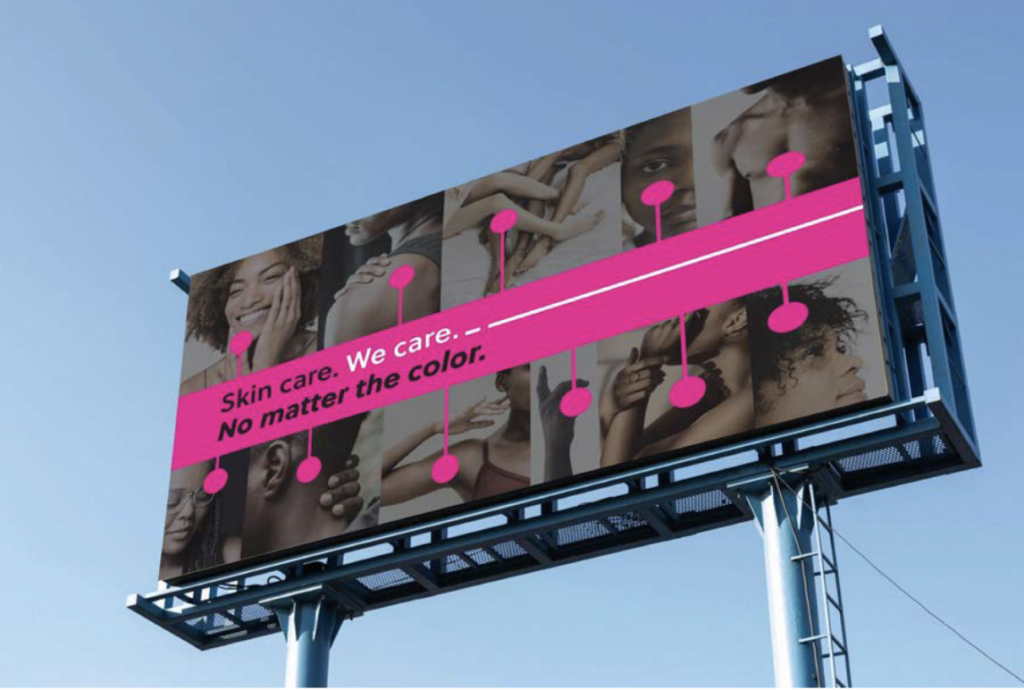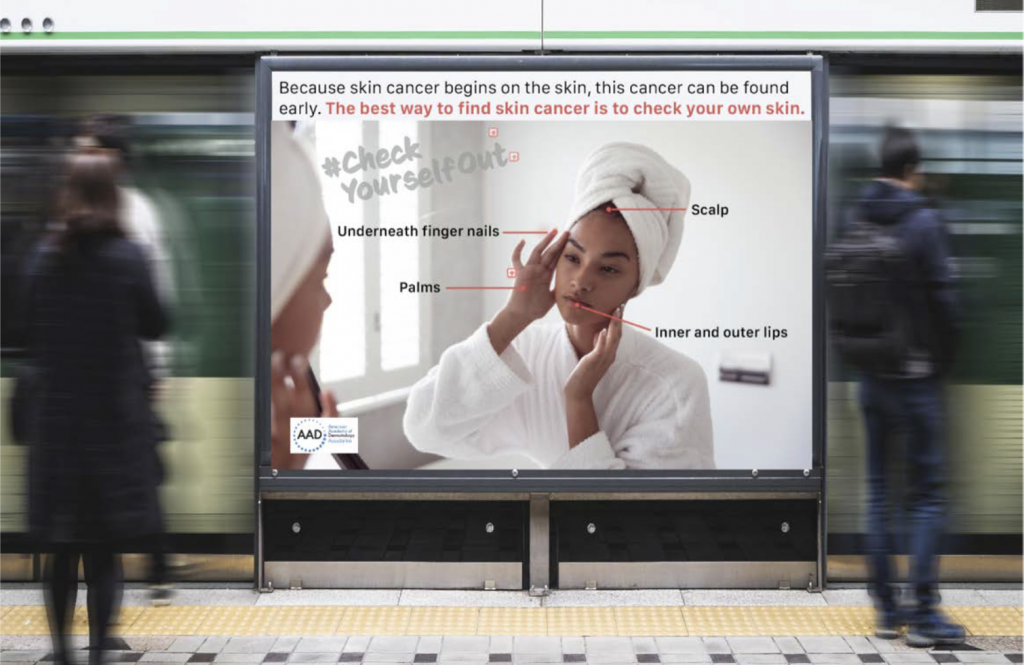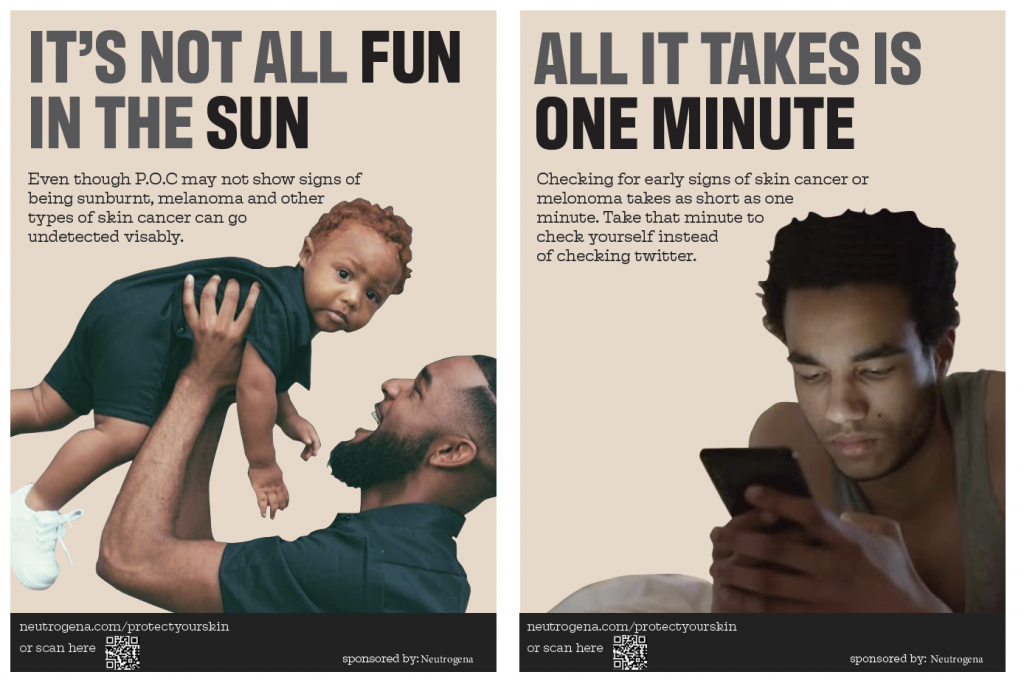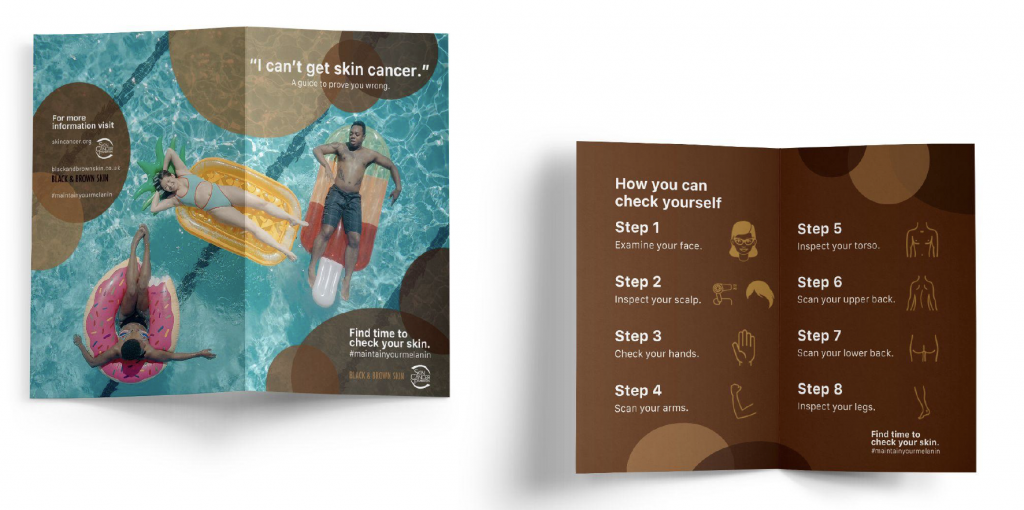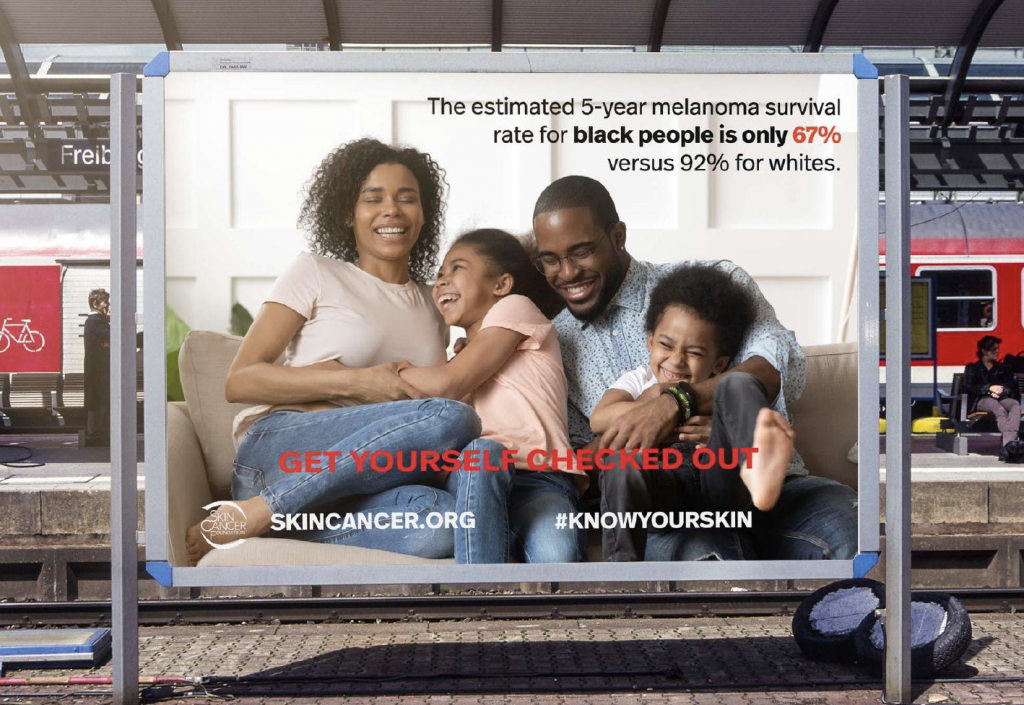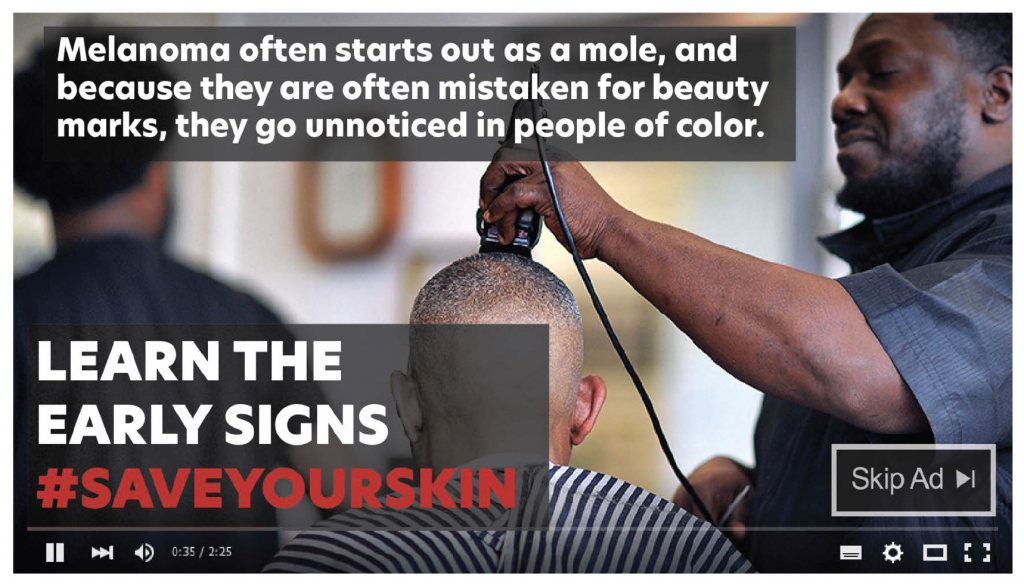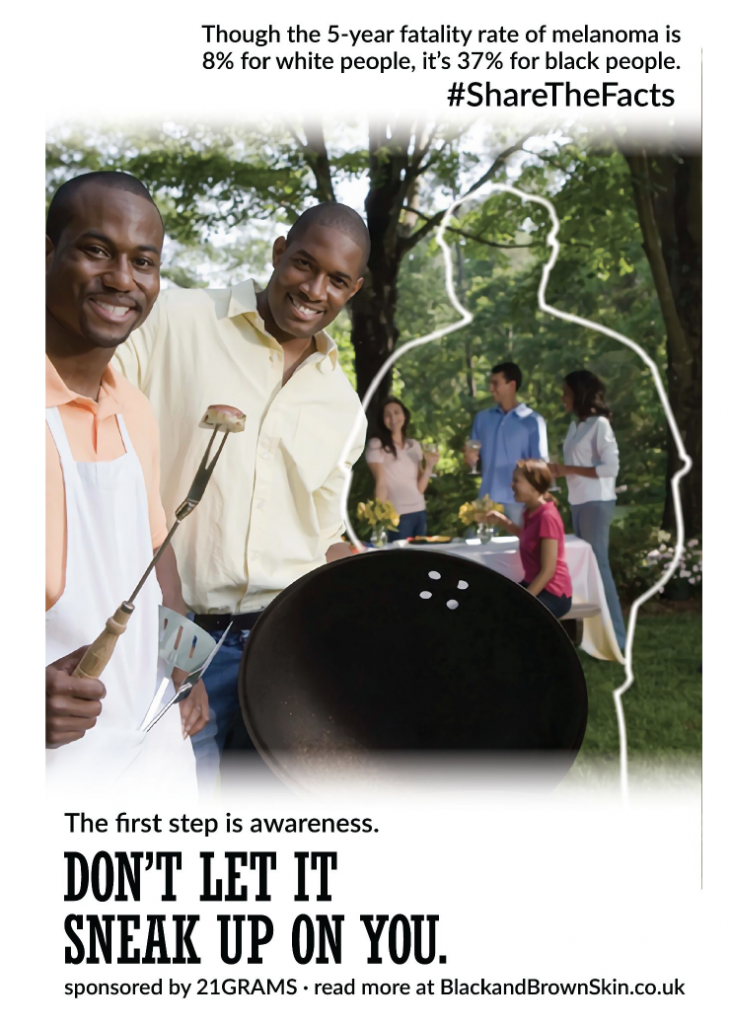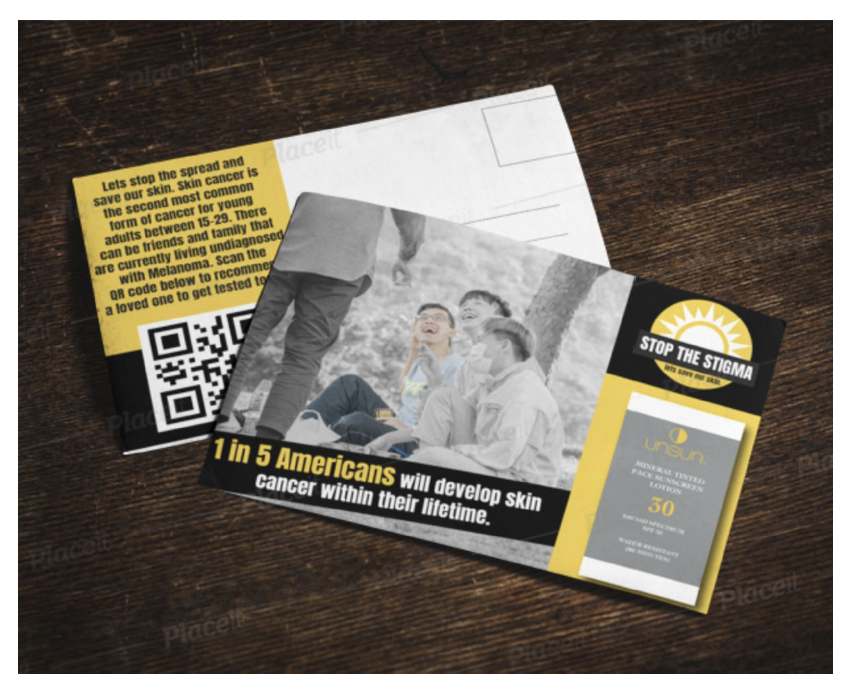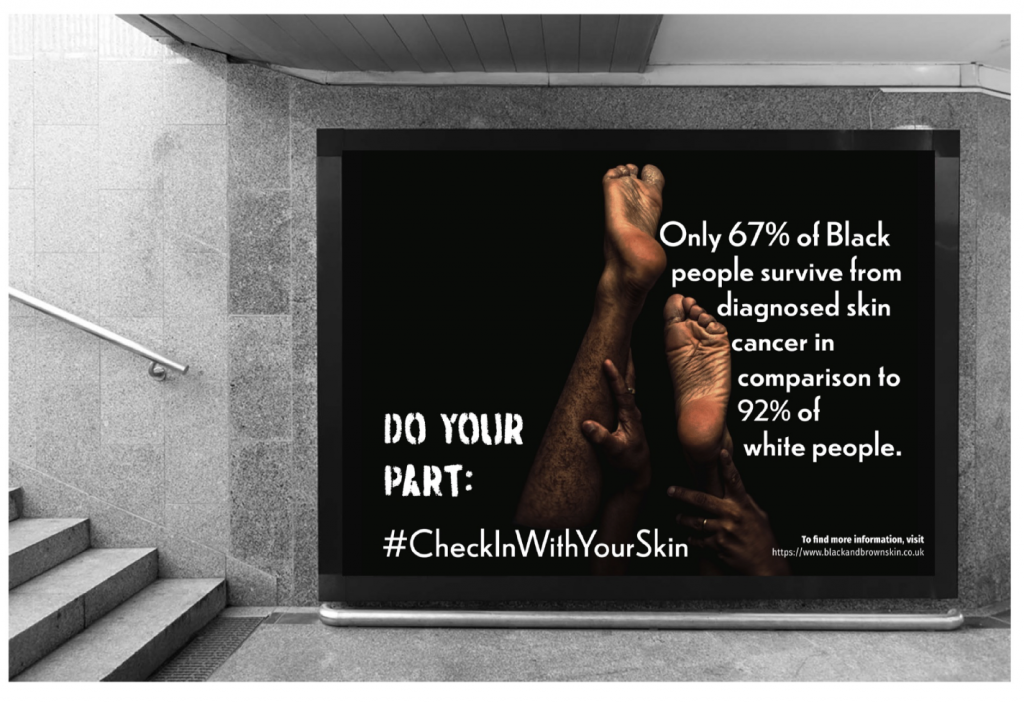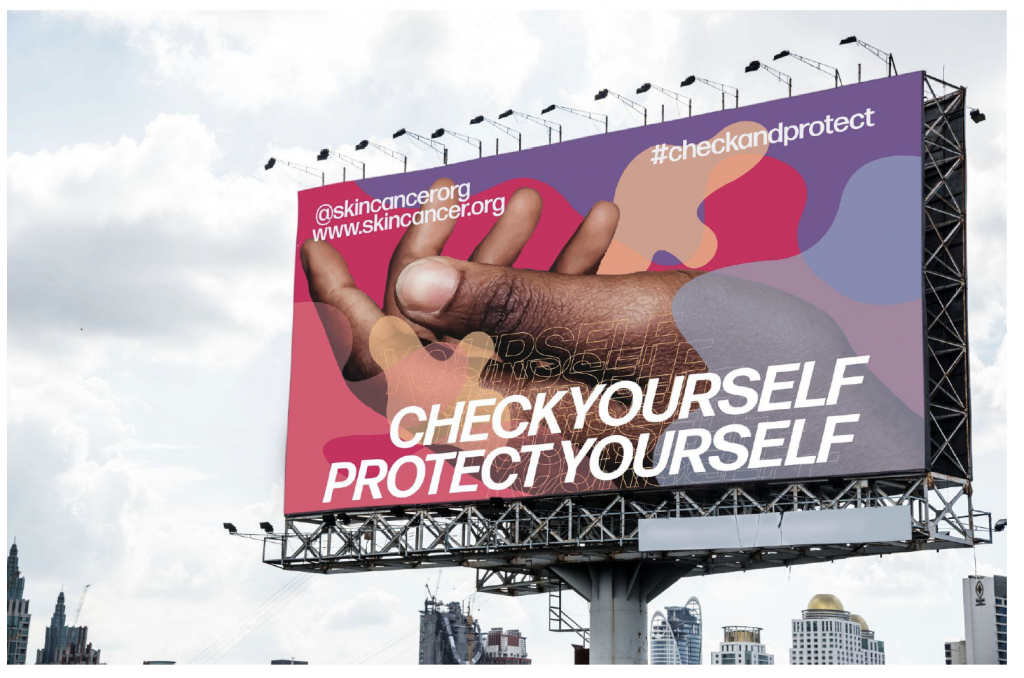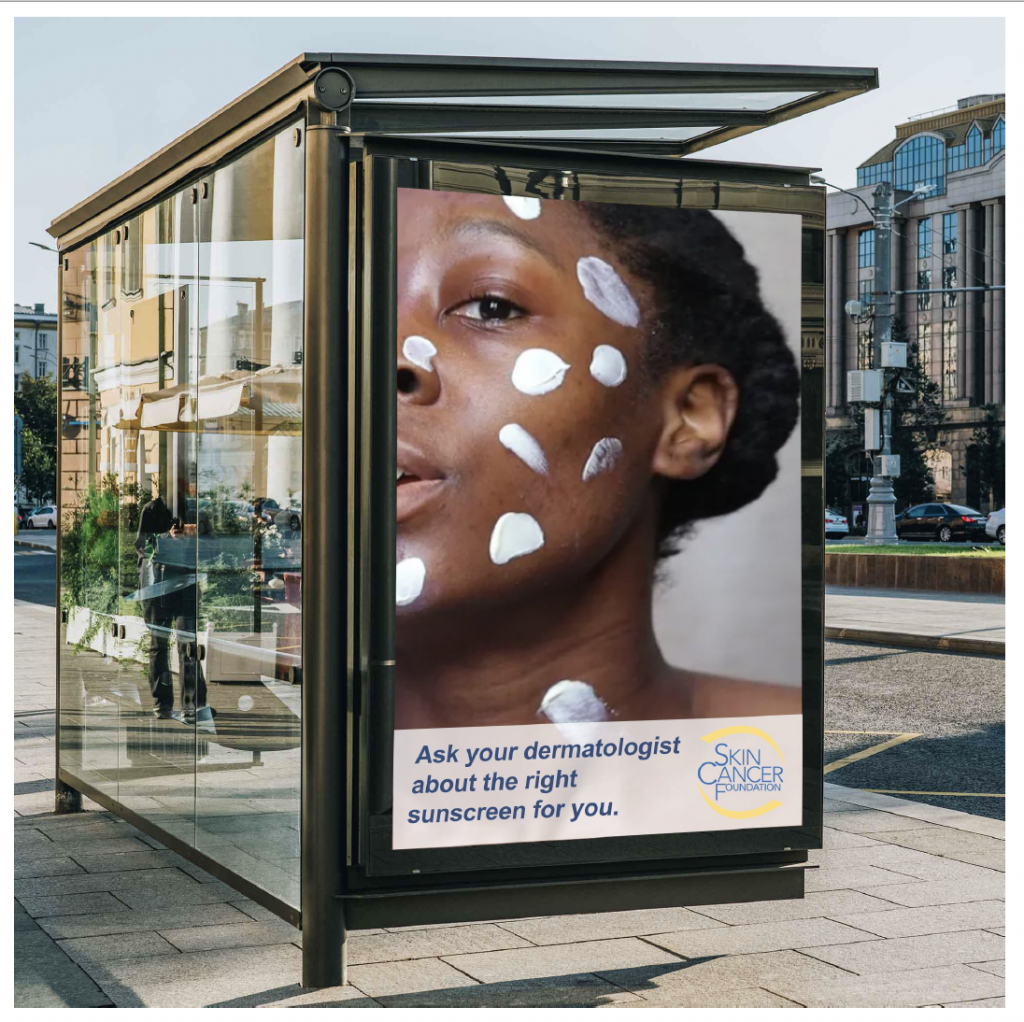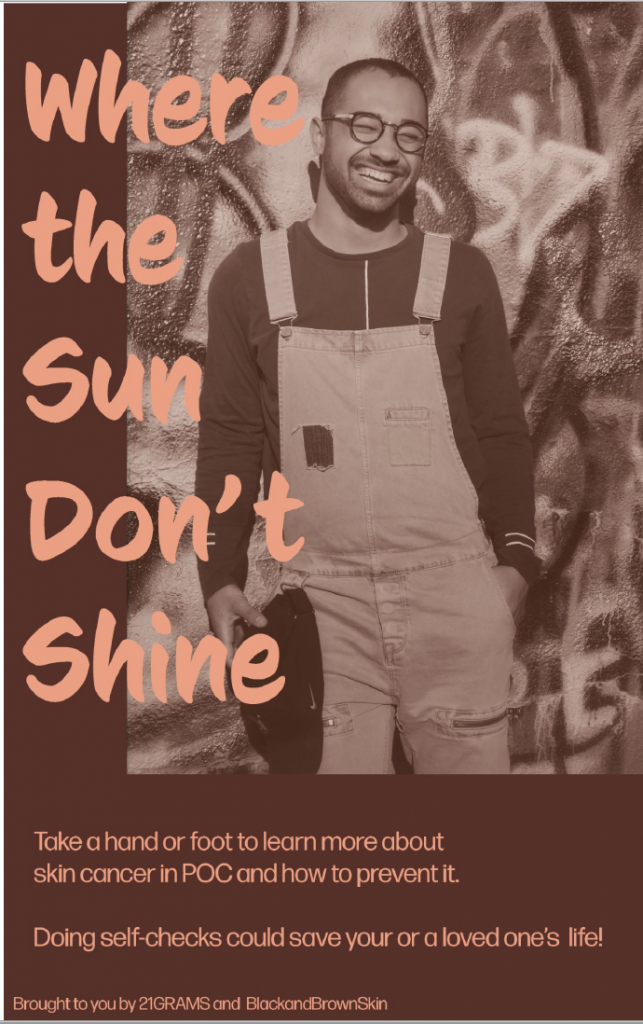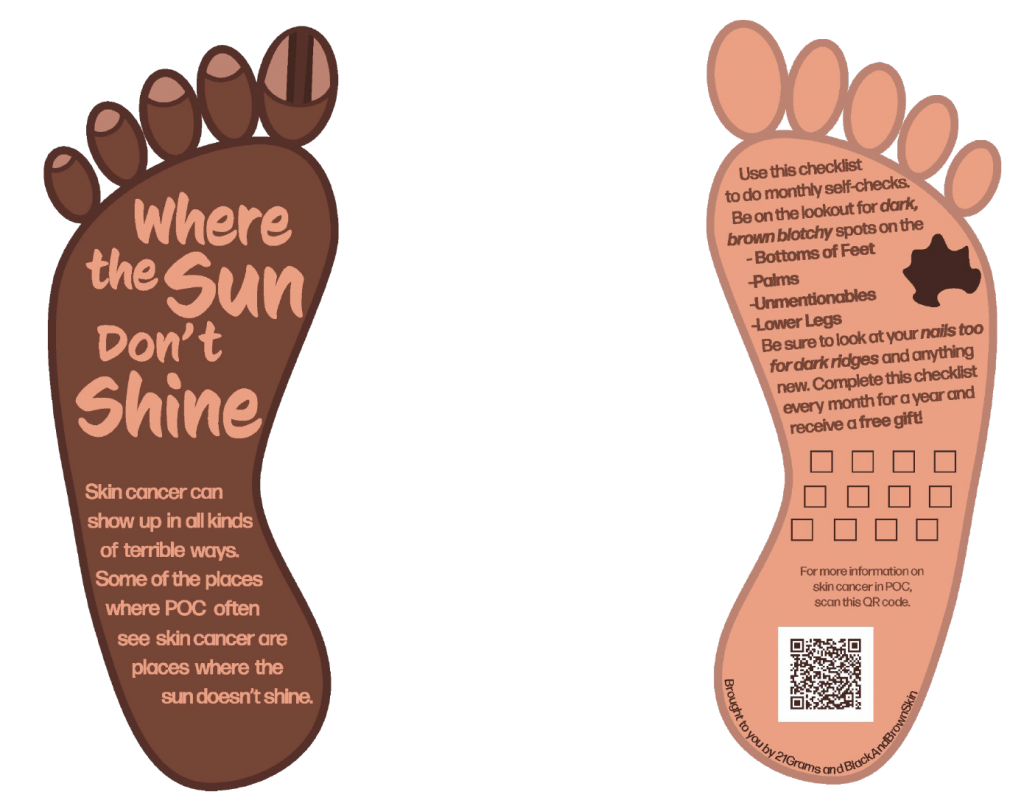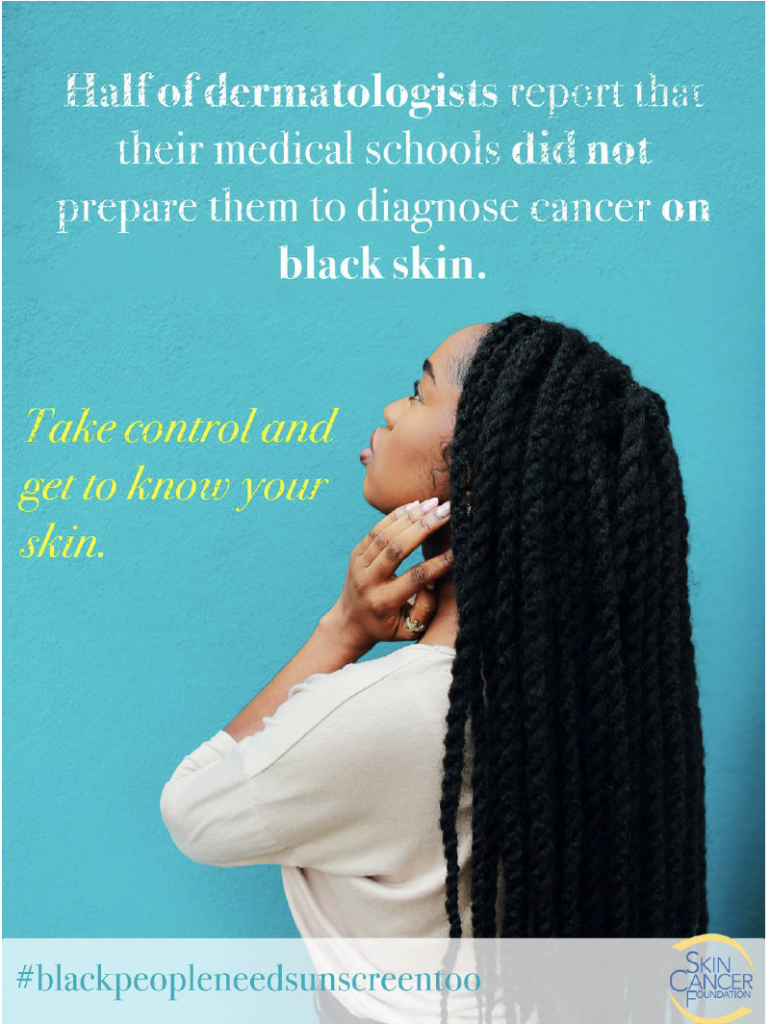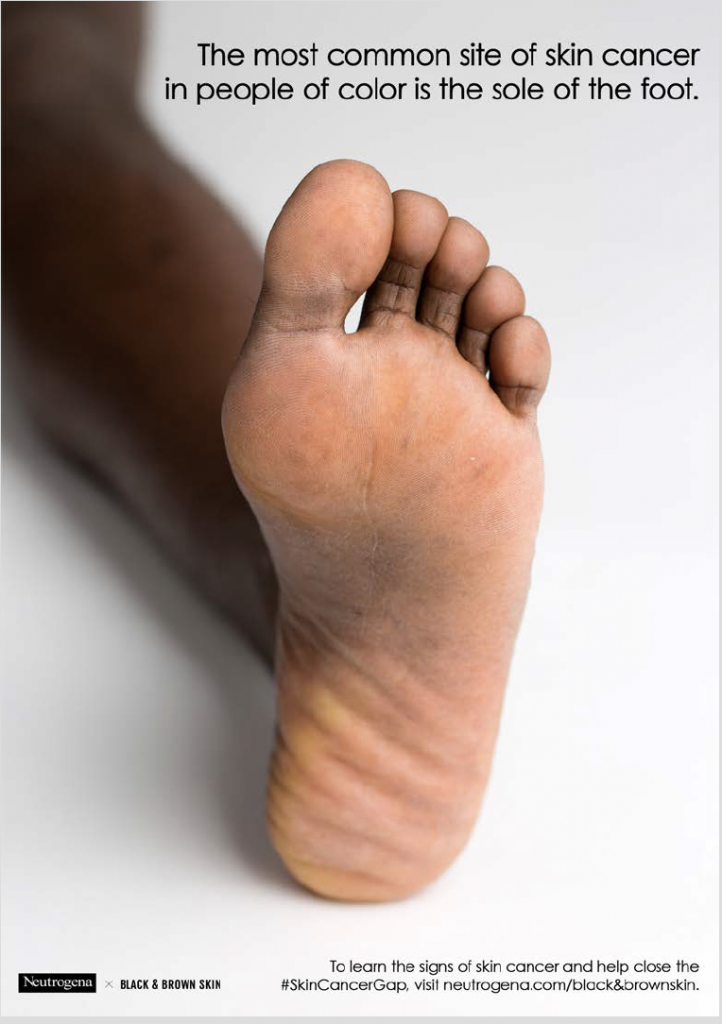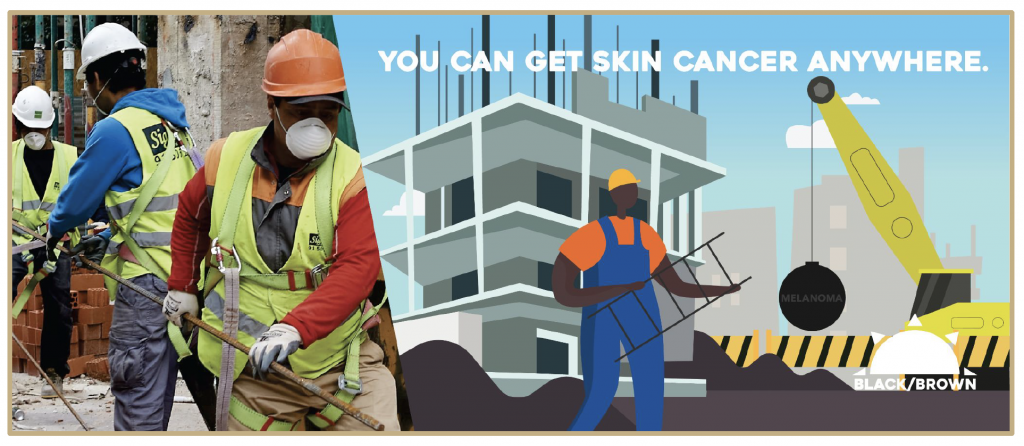


Brief set by 21GRAMS
In collaboration with BlackandBrownSkin
Ignorance is malignant. Change skin cancer care.
The backstory
Search online for “skin cancer” and you’ll be greeted with a wash of moles on White skin. And the survival rate of skin cancer is around 91% for White people. But what about other skin colors? Well that’s when you start to see the survival rate plummet, for Black people especially down to 65%. The reason? Skin cancer tends to be diagnosed at a later stage, and as a result with a worse prognosis. This is because the signs are more difficult to spot thanks to not only a lack of awareness, but also systemic problems and racial disparities in medicine.
What’s the challenge?
Develop an idea that has the ‘legs’ to work across an integrated campaign, that not only raises awareness of skin cancer, specifically melanoma, in people of color, but also helps to drive diagnosis to allow people to receive the treatments they need.

What exactly this looks like is up to you – it could be anything from a large-scale advertising campaign, through to more focused direct marketing approach aimed at specific audiences. But whatever you create needs to be tangible, realistic, and make a meaningful impact on people’s lives; and it needs to be able to do that without huge budgets.
Who are we talking to?
This is all about spreading awareness amongst a huge demographic, because that is what will make the most change. That’s people the world over whose skin-tone is underrepresented in whitewashed medical literature. But your idea should put a particular focus on young Black people around the world who spend lots of time outdoors and might not realize that skin cancer can affect them.
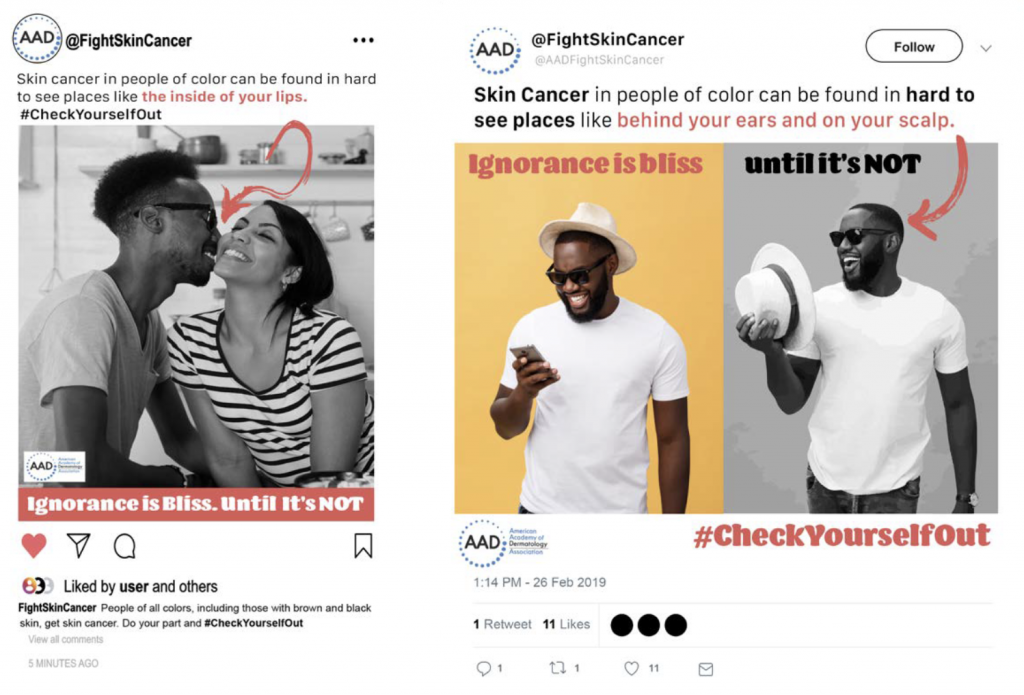
Know the signs
You’ll need to really understand what the main signs of skin cancer are, and especially how they can differ on People of Color and Black skin. For example, melanoma (a type of skin cancer usually identified through new moles, or changes in existing ones) most often occur on non-exposed areas of the body such as palms, in the mouth and nose, and around nails. On White skin they tend to occur in areas exposed to the sun, and this is what shapes popular understanding of the disease, when the sole of the foot is the most common site of skin cancer for black people, representing 30-40% of cases. You’ll need to make sure you research and understand these signs and think about how you can help people to recognize them.
Make an impact
Whatever your idea is, it should break the barriers to identifying skin cancer in People of Color and Black skin, allow people to recognize the signs and help people get diagnosed faster. The better it does this, the better the impact it will make.
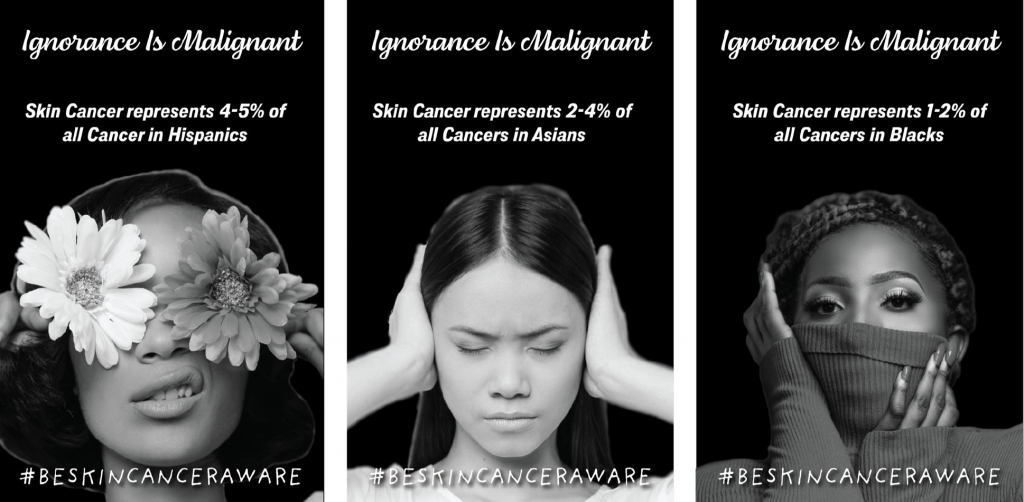
Speak to your audience (This is really important)
Focus on your audience and consider what will make them sit up and take notice. Think about how your idea can infiltrate spaces they exist in, and engage with them directly. No matter how great your idea is, if you can’t ignite your audience’s interest, it won’t make any headway, so get to know who you’re talking to… What might the best ‘Touch Points’ be?



